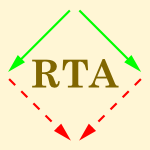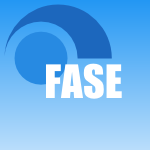93 papers:
 CHI-2015-BakerML #named
CHI-2015-BakerML #named- StructJumper: A Tool to Help Blind Programmers Navigate and Understand the Structure of Code (CMB, LRM, REL), pp. 3043–3052.
 CHI-2015-BranhamK #collaboration #how
CHI-2015-BranhamK #collaboration #how- Collaborative Accessibility: How Blind and Sighted Companions Co-Create Accessible Home Spaces (SMB, SKK), pp. 2373–2382.
 CHI-2015-DaltonCM #using
CHI-2015-DaltonCM #using- Display Blindness?: Looking Again at the Visibility of Situated Displays using Eye-tracking (NSD, EC, PM), pp. 3889–3898.
 CHI-2015-ZhongLBB #image #named
CHI-2015-ZhongLBB #image #named- RegionSpeak: Quick Comprehensive Spatial Descriptions of Complex Images for Blind Users (YZ, WSL, ELB, JPB), pp. 2353–2362.
 HCI-IT-2015-PolsonS #design #empirical #game studies
HCI-IT-2015-PolsonS #design #empirical #game studies- “Blind Faith”. An Experiment with Narrative Agency in Game Design (DP, VS), pp. 618–627.
 CHI-2014-ManduchiC #visual notation
CHI-2014-ManduchiC #visual notation- The last meter: blind visual guidance to a target (RM, JMC), pp. 3113–3122.
 CSCW-2014-KangKK #analysis #collaboration #information management #tool support
CSCW-2014-KangKK #analysis #collaboration #information management #tool support- Teammate inaccuracy blindness: when information sharing tools hinder collaborative analysis (RK, AK, SBK), pp. 797–806.
 CSCW-2014-MatthiesenBP #development #how #quote
CSCW-2014-MatthiesenBP #development #how #quote- “Figure out how to code with the hands of others”: recognizing cultural blind spots in global software development (SM, PB, LMP), pp. 1107–1119.
 HIMI-AS-2014-KangSCL #case study #eye tracking
HIMI-AS-2014-KangSCL #case study #eye tracking- A Study of Drivers’ Blind Spot in Used of Eye Tracking (YYK, YCS, CCC, CLL), pp. 253–260.
 ICPR-2014-GongWLT #consistency #video
ICPR-2014-GongWLT #consistency #video- Temporal Consistency Based Method for Blind Video Deblurring (WG, WW, WL, ST), pp. 861–864.
 CASE-2013-ChengXZZWS
CASE-2013-ChengXZZWS- Integrated control of blind and lights in daily office environment (ZC, LX, QZ, YZ, FW, FS), pp. 587–592.
 ICDAR-2013-NassuMO #detection #documentation #image #towards
ICDAR-2013-NassuMO #detection #documentation #image #towards- Text Line Detection in Document Images: Towards a Support System for the Blind (BTN, RM, LESdO), pp. 638–642.
 CHI-2013-BradyMZWB #challenge #people #visual notation
CHI-2013-BradyMZWB #challenge #people #visual notation- Visual challenges in the everyday lives of blind people (ELB, MRM, YZ, SW, JPB), pp. 2117–2126.
 CHI-2013-PaneelsOBC #exclamation #usability #what
CHI-2013-PaneelsOBC #exclamation #usability #what- Listen to it yourself!: evaluating usability of what’s around me? for the blind (SAP, AO, JRB, JRC), pp. 2107–2116.
 CSCW-2013-BradyZMB #network #social
CSCW-2013-BradyZMB #network #social- Investigating the appropriateness of social network question asking as a resource for blind users (ELB, YZ, MRM, JPB), pp. 1225–1236.
 HCI-III-2013-FernandesFMPB #framework #network
HCI-III-2013-FernandesFMPB #framework #network- RFID Mesh Network as an Infrastructure for Location Based Services for the Blind (HF, JF, PM, HP, JB), pp. 39–45.
 HCI-UC-2013-LinHW #learning #using #visual notation
HCI-UC-2013-LinHW #learning #using #visual notation- Establishing a Cognitive Map of Public Place for Blind and Visual Impaired by Using IVEO Hands-On Learning System (QWL, SLH, JLW), pp. 193–198.
 CHI-2012-DaviesB #mobile
CHI-2012-DaviesB #mobile- The case of the missed icon: change blindness on mobile devices (TD, AKB), pp. 1451–1460.
 CHI-2012-LazarFBMWHOE #approach #interactive #proving
CHI-2012-LazarFBMWHOE #approach #interactive #proving- The SoundsRight CAPTCHA: an improved approach to audio human interaction proofs for blind users (JL, JF, TB, GM, BW, JH, AO, NE), pp. 2267–2276.
 CHI-2012-PowerFPS #guidelines #problem #web
CHI-2012-PowerFPS #guidelines #problem #web- Guidelines are only half of the story: accessibility problems encountered by blind users on the web (CP, APF, HP, DS), pp. 433–442.
 ICPR-2012-FangZ #learning
ICPR-2012-FangZ #learning- I don’t know the label: Active learning with blind knowledge (MF, XZ), pp. 2238–2241.
 ICPR-2012-KirbizG #matrix #music
ICPR-2012-KirbizG #matrix #music- Perceptually weighted Non-negative Matrix Factorization for blind single-channel music source separation (SK, BG), pp. 226–229.
 ICPR-2012-LePB #detection #navigation #people
ICPR-2012-LePB #detection #navigation #people- Pedestrian lane detection for assistive navigation of blind people (MCL, SLP, AB), pp. 2594–2597.
 ICPR-2012-LiZZZS #image #taxonomy
ICPR-2012-LiZZZS #image #taxonomy- Blind image deblurring based on sparse prior of dictionary pair (HL, YZ, HZ, YZ, JS), pp. 3054–3057.
 ICPR-2012-WangL #estimation #image #kernel #robust
ICPR-2012-WangL #estimation #image #kernel #robust- Robust kernel estimation for single image blind deconvolution (FW, YL), pp. 481–484.
 CHI-2011-AzenkotPBFLW #independence #safety
CHI-2011-AzenkotPBFLW #independence #safety- Enhancing independence and safety for blind and deaf-blind public transit riders (SA, SP, AB, EF, REL, JOW), pp. 3247–3256.
 CHI-2011-KaneWL #comprehension #gesture #people #performance
CHI-2011-KaneWL #comprehension #gesture #people #performance- Usable gestures for blind people: understanding preference and performance (SKK, JOW, REL), pp. 413–422.
 CHI-2011-KannabiranBB #how #human-computer #research
CHI-2011-KannabiranBB #how #human-computer #research- How HCI talks about sexuality: discursive strategies, blind spots, and opportunities for future research (GK, JB, SB), pp. 695–704.
 CHI-2011-KimL11a #experience #named #people #statistics
CHI-2011-KimL11a #experience #named #people #statistics- Handscope: enabling blind people to experience statistical graphics on websites through haptics (DjK, YKL), pp. 2039–2042.
 ICEIS-v4-2011-WangS11a
ICEIS-v4-2011-WangS11a- Accessibility of Group Support for Blind Users (YW, JS), pp. 297–303.
 KDIR-2011-Aladjem #modelling #probability
KDIR-2011-Aladjem #modelling #probability- Probabilistic Modeling, Projection Pursuit and Blind Source Separation (MA), p. 9.
 CASE-2010-SunLJJWS #energy
CASE-2010-SunLJJWS #energy- An integrated control of shading blinds, natural ventilation, and HVAC systems for energy saving and human comfort (BS, PBL, QSJ, ZJ, FW, CS), pp. 7–14.
 SFM-2010-BroadbentFK #quantum
SFM-2010-BroadbentFK #quantum- Measurement-Based and Universal Blind Quantum Computation (AB, JF, EK), pp. 43–86.
 ICPR-2010-ErdoganG #using
ICPR-2010-ErdoganG #using- Semi-blind Speech-Music Separation Using Sparsity and Continuity Priors (HE, EMG), pp. 4573–4576.
 ICPR-2010-MaTW #analysis #random #using
ICPR-2010-MaTW #analysis #random #using- Nonlinear Blind Source Separation Using Slow Feature Analysis with Random Features (KM, QT, JW), pp. 830–833.
 ICPR-2010-Soheili
ICPR-2010-Soheili- Blind Wavelet Based Logo Watermarking Resisting to Cropping (MRS), pp. 1449–1452.
 ICDAR-2009-GotoT #smarttech
ICDAR-2009-GotoT #smarttech- Text-Tracking Wearable Camera System for the Blind (HG, MT), pp. 141–145.
 CHI-2009-TalbotC #distance #on the #representation
CHI-2009-TalbotC #distance #on the #representation- On the audio representation of distance for blind users (MT, WC), pp. 1839–1848.
 HIMI-II-2009-AnseT #development #web
HIMI-II-2009-AnseT #development #web- Development of a Coloration Support Tool for Making Web Page Screens User-Friendly for Color Blind (MA, TT), pp. 3–9.
 CC-2009-KnightsMSMD #hardware #optimisation
CC-2009-KnightsMSMD #hardware #optimisation- Blind Optimization for Exploiting Hardware Features (DK, TM, PFS, MCM, AD), pp. 251–265.
 RTA-2009-SeidlV #protocol
RTA-2009-SeidlV #protocol- Flat and One-Variable Clauses for Single Blind Copying Protocols: The XOR Case (HS, KNV), pp. 118–132.
 ICPR-2008-SroubekFS #video
ICPR-2008-SroubekFS #video- Superresolution and blind deconvolution of video (FS, JF, MS), pp. 1–4.
 ICDAR-2007-PatiR #documentation #multi
ICDAR-2007-PatiR #documentation #multi- A Blind Indic Script Recognizer for Multi-script Documents (PP, AR), pp. 1248–1252.
 ITiCSE-2007-CalderCLLS #data type #education #student
ITiCSE-2007-CalderCLLS #data type #education #student- Teaching data structures to students who are blind (MC, RFC, JAL, NL, JS), pp. 87–90.
 CHI-2007-JeffersonH #interface
CHI-2007-JeffersonH #interface- An interface to support color blind computer users (LJ, RH), pp. 1535–1538.
 RE-2007-HeblerTP #mobile #requirements
RE-2007-HeblerTP #mobile #requirements- Blind User Requirements Engineering for Mobile Services (SH, TT, KP), pp. 205–208.
 ICML-2006-BowlingMJNW #learning #policy #predict #using
ICML-2006-BowlingMJNW #learning #policy #predict #using- Learning predictive state representations using non-blind policies (MHB, PM, MJ, JN, DFW), pp. 129–136.
 ICPR-v3-2006-ChenWTG #analysis #empirical #image #matrix #statistics
ICPR-v3-2006-ChenWTG #analysis #empirical #image #matrix #statistics- Blind Image Steganalysis Based on Statistical Analysis of Empirical Matrix (XC, YW, TT, LG), pp. 1107–1110.
 ICPR-v3-2006-LiWG #algorithm #novel
ICPR-v3-2006-LiWG #algorithm #novel- A Novel Blind Watermarking Algorithm in Contourlet Domain (HL, JW, HG), pp. 639–642.
 ICPR-v3-2006-PuDJ #robust #towards
ICPR-v3-2006-PuDJ #robust #towards- Toward Blind Robust Watermarking of Vector Maps (YCP, WCD, ICJ), pp. 930–933.
 ICPR-v4-2006-WongN #classification
ICPR-v4-2006-WongN #classification- Blind Phase-Amplitude Modulation Classification with Unknown Phase Offset (MLDW, AKN), pp. 177–180.
 SIGIR-2006-HeP #feedback
SIGIR-2006-HeP #feedback- Comparing two blind relevance feedback techniques (DH, YP), pp. 649–650.
 SIGIR-2006-Tomlinson #feedback #metric #precise
SIGIR-2006-Tomlinson #feedback #metric #precise- Early precision measures: implications from the downside of blind feedback (ST), pp. 705–706.
 HT-2005-SalampasisKM #people #semantics
HT-2005-SalampasisKM #people #semantics- Semantically enhanced browsing for blind people in the WWW (MS, CK, AM), pp. 32–34.
 ICDAR-2005-EzakiKMBS #detection
ICDAR-2005-EzakiKMBS #detection- Improved Text-Detection Methods for a Camera-based Text Reading System for Blind Persons (NE, KK, BTM, MB, LS), pp. 257–261.
 FASE-2005-LarsenLW #source code #specification
FASE-2005-LarsenLW #source code #specification- Color-Blind Specifications for Transformations of Reactive Synchronous Programs (KGL, UL, AW), pp. 160–174.
 CHI-2005-MankoffFT #case study #comparative #web
CHI-2005-MankoffFT #case study #comparative #web- Is your web page accessible?: a comparative study of methods for assessing web page accessibility for the blind (JM, HF, TT), pp. 41–50.
 SIGIR-2005-LinM #feedback #independence
SIGIR-2005-LinM #feedback #independence- Assessing the term independence assumption in blind relevance feedback (JJL, GCM), pp. 635–636.
 PPDP-2005-CortierRZ #encryption #protocol #verification
PPDP-2005-CortierRZ #encryption #protocol #verification- A resolution strategy for verifying cryptographic protocols with CBC encryption and blind signatures (VC, MR, EZ), pp. 12–22.
 ICEIS-v5-2004-GuilletRP #adaptation
ICEIS-v5-2004-GuilletRP #adaptation- User Adaptation in a Pedestrian Guidance System for the Blind (VG, BR, JMP), pp. 69–74.
 CIKM-2004-LynamBCC #analysis #documentation #feedback #multi
CIKM-2004-LynamBCC #analysis #documentation #feedback #multi- A multi-system analysis of document and term selection for blind feedback (TRL, CB, CLAC, GVC), pp. 261–269.
 ICPR-v1-2004-IwatsukaYK #development #people #recognition
ICPR-v1-2004-IwatsukaYK #development #people #recognition- Development of a Guide Dog System for the Blind People with Character Recognition Ability (KI, KY, KK), pp. 453–456.
 ICPR-v2-2004-BeginF #approach #using
ICPR-v2-2004-BeginF #approach #using- Blind Super-Resolution Using a Learning-Based Approach (IB, FPF), pp. 85–89.
 ICPR-v2-2004-Kovalev #image #retrieval #towards
ICPR-v2-2004-Kovalev #image #retrieval #towards- Towards Image Retrieval for Eight Percent of Color-Blind Men (VAK), pp. 943–946.
 ICPR-v2-2004-SenerG #analysis #component #independence #using
ICPR-v2-2004-SenerG #analysis #component #independence #using- Blind Audio Watermark Decoding Using Independent Component Analysis (SS, BG), pp. 875–878.
 SIGIR-2004-FanLWXF #feedback #ranking #retrieval #robust
SIGIR-2004-FanLWXF #feedback #ranking #retrieval #robust- Tuning before feedback: combining ranking discovery and blind feedback for robust retrieval (WF, ML, LW, WX, EAF), pp. 138–145.
 SIGIR-2004-GuL #comparison #documentation #feedback #information retrieval #using
SIGIR-2004-GuL #comparison #documentation #feedback #information retrieval #using- Comparison of using passages and documents for blind relevance feedback in information retrieval (ZG, ML), pp. 482–483.
 SIGIR-2004-MontgomerySCE #analysis #documentation #empirical #feedback
SIGIR-2004-MontgomerySCE #analysis #documentation #empirical #feedback- Effect of varying number of documents in blind feedback: analysis of the 2003 NRRC RIA workshop “bf_numdocs” experiment suite (JM, LS, JC, DAE), pp. 476–477.
 DLT-2002-Hoogeboom #automaton
DLT-2002-Hoogeboom #automaton- Carriers and Counters: P Systems with Carriers vs. (Blind) Counter Automata (HJH), pp. 140–151.
 ICPR-v2-2002-ChenQ #2d #evaluation #roadmap
ICPR-v2-2002-ChenQ #2d #evaluation #roadmap- Recent Trends in 2D Blind Deconvolution for Nondestructive Evaluation (CHC, UQ), pp. 989–992.
 SAC-2002-FerreiraD #embedded #mobile
SAC-2002-FerreiraD #embedded #mobile- Blinded-key signatures: securing private keys embedded in mobile agents (LCF, RD), pp. 82–86.
 CSL-2001-Finkel #automaton #effectiveness
CSL-2001-Finkel #automaton #effectiveness- An Effective Extension of the Wagner Hierarchy to Blind Counter Automata (OF), pp. 369–383.
 ICPR-v2-2000-ChenZN #network
ICPR-v2-2000-ChenZN #network- Blind Separation Based on an Evolutionary Neural Network (YWC, XYZ, ZN), pp. 2973–2976.
 ICPR-v3-2000-SroubekFSS #image #multi
ICPR-v3-2000-SroubekFSS #image #multi- Multichannel Blind Deconvolution of the Short-Exposure Astronomical Images (FS, JF, TS, SS), pp. 3053–3056.
 ICPR-v4-2000-EzakiHYK
ICPR-v4-2000-EzakiHYK- A Pen-Based Japanese Character Input System for the Blind Person (NE, TH, SY, KK), pp. 4372–4375.
 CHI-1999-LumbrerasS #3d #interactive
CHI-1999-LumbrerasS #3d #interactive- Interactive 3D Sound Hyperstories for Blind Children (ML, JS), pp. 318–325.
 HCI-CCAD-1999-InmanL #education #using
HCI-CCAD-1999-InmanL #education #using- Teaching orientation and mobility skills to blind children using simulated acoustical environments (DPI, KL), pp. 1090–1094.
 HCI-CCAD-1999-Lee #case study #user interface #visual notation
HCI-CCAD-1999-Lee #case study #user interface #visual notation- A study on perceptual responses to electrocutaneous stimulation for blind access to computers with graphical user interfaces (SL), pp. 1009–1013.
 HCI-CCAD-1999-PetrucciRAP #visual notation #web
HCI-CCAD-1999-PetrucciRAP #visual notation #web- An audio browser for increasing access to world wide web sites for blind and visually impaired computer users (LP, PR, AA, TP), pp. 995–998.
 HCI-CCAD-1999-ZajicekPR #evaluation #interface #visual notation #web
HCI-CCAD-1999-ZajicekPR #evaluation #interface #visual notation #web- Evaluation of a world wide web scanning interface for blind and visually impaired users (MZ, CP, CR), pp. 980–984.
 HCI-EI-1999-Kuutti99a #community #human-computer #interface #question
HCI-EI-1999-Kuutti99a #community #human-computer #interface #question- Small interfaces — a blind spot of the academical HCI community? (KK), pp. 710–714.
 HCI-EI-1999-SkybergSWVLD #health #reduction
HCI-EI-1999-SkybergSWVLD #health #reduction- Health Improvements Among VDU Workers after Reduction of the Airborne Dust in the Office. — Three Double-blind Intervention Studies (KS, KS, EW, AIV, FL, PD), pp. 61–64.
 ICEIS-1999-FanCY
ICEIS-1999-FanCY- Blind Signatures with Double-Hashes Messages for Fair Electronic Elections and Ownership Claimable Digital Cash (CIF, WKC, YSY), pp. 612–618.
 CHI-1998-AltyR #communication #music #using #visual notation
CHI-1998-AltyR #communication #music #using #visual notation- Communicating Graphical Information to Blind Users Using Music: The Role of Context (JLA, DIR), pp. 574–581.
 ICPR-1998-KrejciFS #image #multi
ICPR-1998-KrejciFS #image #multi- A new multichannel blind deconvolution method and its application to solar images (RK, JF, SS), pp. 1765–1767.
 HT-1997-PetrieMMOM #design #evaluation #hypermedia #interface
HT-1997-PetrieMMOM #design #evaluation #hypermedia #interface- Initial Design and Evaluation of an Interface to Hypermedia Systems for Blind Users (HP, SM, PM, AMO, DM), pp. 48–56.
 HCI-CC-1997-EbinaI #approach #user interface
HCI-CC-1997-EbinaI #approach #user interface- A New Approach to Providing GUI Access for Blind People-Combined Tactile/Voice GUI Access (TE, SI), pp. 405–408.
 CHI-1995-SavidisS #interface
CHI-1995-SavidisS #interface- Developing Dual Interfaces for Integrating Blind and Sighted Users: The HOMER UIMS (AS, CS), pp. 106–113.
 HCI-SHI-1993-Gunderson #bibliography #design #people
HCI-SHI-1993-Gunderson #bibliography #design #people- Intelligent Task Based Model for the Design of Screen Review Systems for People with Blindness (JPG), pp. 736–741.
 HCI-SHI-1993-LeeWV #2d #interactive #interface
HCI-SHI-1993-LeeWV #2d #interactive #interface- Interactive Haptic Interface: Two-Dimensional Form Perception for Blind Access to Computers (SL, SFW, GCV), pp. 190–195.
 HCI-SHI-1993-MartialD #design #named #people #user interface #visual notation
HCI-SHI-1993-MartialD #design #named #people #user interface #visual notation- Audicon: Easy Access to Graphical User Interfaces for Blind Persons — Designing for and with People (OM, AD), pp. 808–813.
 ML-1991-KedarBD #approximate #refinement
ML-1991-KedarBD #approximate #refinement- The Blind Leading the Blind: Mutual Refinement of Approximate Theories (SK, JLB, CLD), pp. 308–312.
 ICALP-1976-Sintzoff #backtracking #source code
ICALP-1976-Sintzoff #backtracking #source code- Eliminating Blind Alleys from Backtrack Programs (MS), pp. 531–557.
 CHI-2015-BakerML #named
CHI-2015-BakerML #named CHI-2015-BranhamK #collaboration #how
CHI-2015-BranhamK #collaboration #how CHI-2015-DaltonCM #using
CHI-2015-DaltonCM #using CHI-2015-ZhongLBB #image #named
CHI-2015-ZhongLBB #image #named HCI-IT-2015-PolsonS #design #empirical #game studies
HCI-IT-2015-PolsonS #design #empirical #game studies CHI-2014-ManduchiC #visual notation
CHI-2014-ManduchiC #visual notation CSCW-2014-KangKK #analysis #collaboration #information management #tool support
CSCW-2014-KangKK #analysis #collaboration #information management #tool support CSCW-2014-MatthiesenBP #development #how #quote
CSCW-2014-MatthiesenBP #development #how #quote HIMI-AS-2014-KangSCL #case study #eye tracking
HIMI-AS-2014-KangSCL #case study #eye tracking ICPR-2014-GongWLT #consistency #video
ICPR-2014-GongWLT #consistency #video CASE-2013-ChengXZZWS
CASE-2013-ChengXZZWS ICDAR-2013-NassuMO #detection #documentation #image #towards
ICDAR-2013-NassuMO #detection #documentation #image #towards CHI-2013-BradyMZWB #challenge #people #visual notation
CHI-2013-BradyMZWB #challenge #people #visual notation CHI-2013-PaneelsOBC #exclamation #usability #what
CHI-2013-PaneelsOBC #exclamation #usability #what CSCW-2013-BradyZMB #network #social
CSCW-2013-BradyZMB #network #social HCI-III-2013-FernandesFMPB #framework #network
HCI-III-2013-FernandesFMPB #framework #network HCI-UC-2013-LinHW #learning #using #visual notation
HCI-UC-2013-LinHW #learning #using #visual notation CHI-2012-DaviesB #mobile
CHI-2012-DaviesB #mobile CHI-2012-LazarFBMWHOE #approach #interactive #proving
CHI-2012-LazarFBMWHOE #approach #interactive #proving CHI-2012-PowerFPS #guidelines #problem #web
CHI-2012-PowerFPS #guidelines #problem #web ICPR-2012-FangZ #learning
ICPR-2012-FangZ #learning ICPR-2012-KirbizG #matrix #music
ICPR-2012-KirbizG #matrix #music ICPR-2012-LePB #detection #navigation #people
ICPR-2012-LePB #detection #navigation #people ICPR-2012-LiZZZS #image #taxonomy
ICPR-2012-LiZZZS #image #taxonomy ICPR-2012-WangL #estimation #image #kernel #robust
ICPR-2012-WangL #estimation #image #kernel #robust CHI-2011-AzenkotPBFLW #independence #safety
CHI-2011-AzenkotPBFLW #independence #safety CHI-2011-KaneWL #comprehension #gesture #people #performance
CHI-2011-KaneWL #comprehension #gesture #people #performance CHI-2011-KannabiranBB #how #human-computer #research
CHI-2011-KannabiranBB #how #human-computer #research CHI-2011-KimL11a #experience #named #people #statistics
CHI-2011-KimL11a #experience #named #people #statistics ICEIS-v4-2011-WangS11a
ICEIS-v4-2011-WangS11a KDIR-2011-Aladjem #modelling #probability
KDIR-2011-Aladjem #modelling #probability CASE-2010-SunLJJWS #energy
CASE-2010-SunLJJWS #energy SFM-2010-BroadbentFK #quantum
SFM-2010-BroadbentFK #quantum ICPR-2010-ErdoganG #using
ICPR-2010-ErdoganG #using ICPR-2010-MaTW #analysis #random #using
ICPR-2010-MaTW #analysis #random #using ICPR-2010-Soheili
ICPR-2010-Soheili ICDAR-2009-GotoT #smarttech
ICDAR-2009-GotoT #smarttech CHI-2009-TalbotC #distance #on the #representation
CHI-2009-TalbotC #distance #on the #representation HIMI-II-2009-AnseT #development #web
HIMI-II-2009-AnseT #development #web CC-2009-KnightsMSMD #hardware #optimisation
CC-2009-KnightsMSMD #hardware #optimisation RTA-2009-SeidlV #protocol
RTA-2009-SeidlV #protocol ICPR-2008-SroubekFS #video
ICPR-2008-SroubekFS #video ICDAR-2007-PatiR #documentation #multi
ICDAR-2007-PatiR #documentation #multi ITiCSE-2007-CalderCLLS #data type #education #student
ITiCSE-2007-CalderCLLS #data type #education #student CHI-2007-JeffersonH #interface
CHI-2007-JeffersonH #interface RE-2007-HeblerTP #mobile #requirements
RE-2007-HeblerTP #mobile #requirements ICML-2006-BowlingMJNW #learning #policy #predict #using
ICML-2006-BowlingMJNW #learning #policy #predict #using ICPR-v3-2006-ChenWTG #analysis #empirical #image #matrix #statistics
ICPR-v3-2006-ChenWTG #analysis #empirical #image #matrix #statistics ICPR-v3-2006-LiWG #algorithm #novel
ICPR-v3-2006-LiWG #algorithm #novel ICPR-v3-2006-PuDJ #robust #towards
ICPR-v3-2006-PuDJ #robust #towards ICPR-v4-2006-WongN #classification
ICPR-v4-2006-WongN #classification SIGIR-2006-HeP #feedback
SIGIR-2006-HeP #feedback SIGIR-2006-Tomlinson #feedback #metric #precise
SIGIR-2006-Tomlinson #feedback #metric #precise HT-2005-SalampasisKM #people #semantics
HT-2005-SalampasisKM #people #semantics ICDAR-2005-EzakiKMBS #detection
ICDAR-2005-EzakiKMBS #detection FASE-2005-LarsenLW #source code #specification
FASE-2005-LarsenLW #source code #specification CHI-2005-MankoffFT #case study #comparative #web
CHI-2005-MankoffFT #case study #comparative #web SIGIR-2005-LinM #feedback #independence
SIGIR-2005-LinM #feedback #independence PPDP-2005-CortierRZ #encryption #protocol #verification
PPDP-2005-CortierRZ #encryption #protocol #verification ICEIS-v5-2004-GuilletRP #adaptation
ICEIS-v5-2004-GuilletRP #adaptation CIKM-2004-LynamBCC #analysis #documentation #feedback #multi
CIKM-2004-LynamBCC #analysis #documentation #feedback #multi ICPR-v1-2004-IwatsukaYK #development #people #recognition
ICPR-v1-2004-IwatsukaYK #development #people #recognition ICPR-v2-2004-BeginF #approach #using
ICPR-v2-2004-BeginF #approach #using ICPR-v2-2004-Kovalev #image #retrieval #towards
ICPR-v2-2004-Kovalev #image #retrieval #towards ICPR-v2-2004-SenerG #analysis #component #independence #using
ICPR-v2-2004-SenerG #analysis #component #independence #using SIGIR-2004-FanLWXF #feedback #ranking #retrieval #robust
SIGIR-2004-FanLWXF #feedback #ranking #retrieval #robust SIGIR-2004-GuL #comparison #documentation #feedback #information retrieval #using
SIGIR-2004-GuL #comparison #documentation #feedback #information retrieval #using SIGIR-2004-MontgomerySCE #analysis #documentation #empirical #feedback
SIGIR-2004-MontgomerySCE #analysis #documentation #empirical #feedback DLT-2002-Hoogeboom #automaton
DLT-2002-Hoogeboom #automaton ICPR-v2-2002-ChenQ #2d #evaluation #roadmap
ICPR-v2-2002-ChenQ #2d #evaluation #roadmap SAC-2002-FerreiraD #embedded #mobile
SAC-2002-FerreiraD #embedded #mobile CSL-2001-Finkel #automaton #effectiveness
CSL-2001-Finkel #automaton #effectiveness ICPR-v2-2000-ChenZN #network
ICPR-v2-2000-ChenZN #network ICPR-v3-2000-SroubekFSS #image #multi
ICPR-v3-2000-SroubekFSS #image #multi ICPR-v4-2000-EzakiHYK
ICPR-v4-2000-EzakiHYK CHI-1999-LumbrerasS #3d #interactive
CHI-1999-LumbrerasS #3d #interactive HCI-CCAD-1999-InmanL #education #using
HCI-CCAD-1999-InmanL #education #using HCI-CCAD-1999-Lee #case study #user interface #visual notation
HCI-CCAD-1999-Lee #case study #user interface #visual notation HCI-CCAD-1999-PetrucciRAP #visual notation #web
HCI-CCAD-1999-PetrucciRAP #visual notation #web HCI-CCAD-1999-ZajicekPR #evaluation #interface #visual notation #web
HCI-CCAD-1999-ZajicekPR #evaluation #interface #visual notation #web HCI-EI-1999-Kuutti99a #community #human-computer #interface #question
HCI-EI-1999-Kuutti99a #community #human-computer #interface #question HCI-EI-1999-SkybergSWVLD #health #reduction
HCI-EI-1999-SkybergSWVLD #health #reduction ICEIS-1999-FanCY
ICEIS-1999-FanCY CHI-1998-AltyR #communication #music #using #visual notation
CHI-1998-AltyR #communication #music #using #visual notation ICPR-1998-KrejciFS #image #multi
ICPR-1998-KrejciFS #image #multi HT-1997-PetrieMMOM #design #evaluation #hypermedia #interface
HT-1997-PetrieMMOM #design #evaluation #hypermedia #interface HCI-CC-1997-EbinaI #approach #user interface
HCI-CC-1997-EbinaI #approach #user interface CHI-1995-SavidisS #interface
CHI-1995-SavidisS #interface HCI-SHI-1993-Gunderson #bibliography #design #people
HCI-SHI-1993-Gunderson #bibliography #design #people HCI-SHI-1993-LeeWV #2d #interactive #interface
HCI-SHI-1993-LeeWV #2d #interactive #interface HCI-SHI-1993-MartialD #design #named #people #user interface #visual notation
HCI-SHI-1993-MartialD #design #named #people #user interface #visual notation ML-1991-KedarBD #approximate #refinement
ML-1991-KedarBD #approximate #refinement ICALP-1976-Sintzoff #backtracking #source code
ICALP-1976-Sintzoff #backtracking #source code









